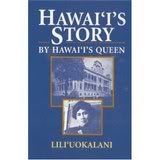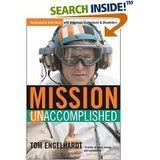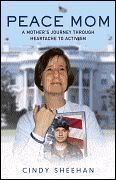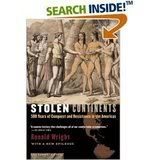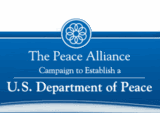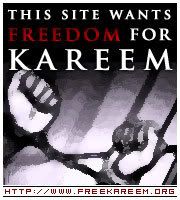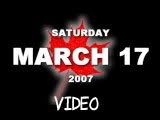Friends, two documentaries this weekend:
1) on CBC’s The Passionate Eye
<http://www.cbc.ca/passionateeyesunday/index.html>
Hiroshima <http://www.cbc.ca/passionateeyesunday/feature_070805.html>
A minute by minute recreation of what it was like to live through the nuclear explosion at Hiroshima.
<http://www.cbc.ca/passionateeyesunday/feature_070805.html>
Sunday August 5 at 10pm ET/PT on Newsworld
2) Thanks to John Loretz of IPPNW, we have info for those of you who subscribe to HBO.
A very important documentary will air on August 6 and will be repeated throughout the month.
More information is available at
www.hbo.com/docs/programs/whitelightblackrain
*WHITE LIGHT/BLACK RAIN:
THE DESTRUCTION OF HIROSHIMA AND NAGASAKI,
AN UNFORGETTABLE LOOK AT THE REALITY OF NUCLEAR WARFARE THROUGH SURVIVORS’ FIRST-HAND ACCOUNTS*, DEBUTS AUG. 6, EXCLUSIVELY ON HBO
On Aug. 6 and 9, 1945, two atomic bombs vaporized 210,000 people in Hiroshima and Nagasaki. Those who survived, of which there are an estimated 200,000 living today, are called “hibakusha” — people exposed to the bomb.
Today, with the world’s arsenal capable of repeating the destruction at Hiroshima 400,000 times over, Steven Okazaki (the Oscar®-winning “Days of Waiting”) revisits the bombings and their aftermath in the exclusive HBO presentation WHITE LIGHT/BLACK RAIN: THE DESTRUCTION OF HIROSHIMA AND NAGASAKI. Debuting MONDAY, AUG. 6 (7:30-9:00 p.m.
ET/PT), the 62nd anniversary of the bombings, the powerful documentary provides a graphic, unflinching look at the reality of nuclear warfare through first-hand accounts of both survivors and American men who carried out the bombing missions.
Other HBO playdates: Aug. 7 (noon, 10:00 p.m.), 11 (noon), 13 (11:30 a.m., 11:00 p.m.), 19 (3:00 p.m.) and 22 (4:00 p.m.).
HBO2 playdates: Aug. 9 (6:00 p.m.), 16 (12:30 a.m.) and 20 (8:00 p.m.).
“With WHITE LIGHT/BLACK RAIN, I wanted to tell one of the great human stories of one of history’s monumental tragedies,” notes Okazaki, who met more than 500 survivors and interviewed more than 100 people before choosing the 14 subjects featured in the film. “The personal memories of the survivors are amazing, shocking and inspiring. They put a human face on the incalculable destruction caused by nuclear war.”
In addition to interviews with 14 atomic bomb survivors, many of whom have never spoken publicly before, WHITE LIGHT/BLACK RAIN spotlights four Americans intimately involved in the bombings. Okazaki interweaves rarely seen, intense archival footage and photographs, banned for 25 years after the war, with survivors’ paintings and drawings, all of which convey the devastating toll of atomic warfare in
human terms.
While 140,000 died in Hiroshima, and 70,000 in Nagasaki, the survivors – 85% of whom were civilians – not vaporized during the attacks continued to suffer burns, infection, radiation sickness and cancer, which would ultimately result in another 160,000 deaths. In a succession of riveting personal accounts, the film reveals both unimaginable suffering and extraordinary human resilience. Sakue
Shimohira, ten years old at the time, recalls the moment she considered killing herself after losing the last member of her family, saying, “I realized there are two kinds of courage – the courage to die and the courage to live.”
Other survivors include: Kiyoko Imori, just blocks from the
hypocenter, the only survivor of an elementary school of 620 students; Shigeko Sasamori, 13 years old at the time, one of the 25 “Hiroshima Maidens” brought to the U.S. for plastic surgery; Keiji Nakazawa, who lost his father, brother and two sisters, and devoted his life to retelling his story in comic books and animation; Shuntaro Hida, a young military doctor at the time, who began treating survivors immediately after the explosion and continues to provide care for them 60 years later; and Etsuko Nagano, who still can’t forgive herself for convincing her family to come to Nagasaki, just weeks before the bombing.
In addition to physical suffering, survivors were later subjected to intense discrimination from fellow Japanese, and received little or no help from the Japanese government. To this day, to identify oneself as an atomic-bomb survivor, or a descendant of a survivor in Japan, can invite prejudice.
The four Americans profiled are: Morris Jeppson, the weapon test officer on the Enola Gay mission to Hiroshima; Lawrence Johnston, a civilian employee of the University of California, which manages Los Alamos; Harold Agnew, a scientific advisor; and Theodore “Dutch” Van Kirk, the navigator who believed the mission would end the war and save lives overall.
Today, as global tensions rise, the unthinkable once more becomes possible. The urgency of the warning conveyed in WHITE LIGHT/BLACK RAIN is borne out by a comment from one of the four Americans: “We have opened Pandora’s box, and the genie can’t be stuffed back in the bottle.”
HBO Video releases WHITE LIGHT/BLACK RAIN: THE DESTRUCTION OF HIROSHIMA AND NAGASAKI on DVD Aug. 7.
Steven Okazaki’s films, which explore the extraordinary lives of ordinary people, include “Days of Waiting,” winner of a Documentary Short Subject Oscar®, as well as a Peabody Award, and two other Oscar® nominees: “Unfinished Business” and last year’s Cinemax Reel Life presentation “The Mushroom Club.” Among his other documentaries are:
“Hunting Tigers,” “Troubled Paradise,” “Americans Sons,” “The Fair” and the HBO documentary “Black Tar Heroin: The Dark End of the Street.”
WHITE LIGHT/BLACK RAIN: THE DESTRUCTION OF HIROSHIMA AND NAGASAKI is an HBO Documentary Films presentation, produced by Farallon Films; directed, written and produced by Steven Okazaki. For HBO: consulting editor, Geoff Bartz; supervising producer, Sara Bernstein; executive producers, Sheila Nevins and Robert Richter.
###















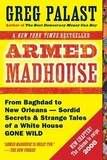

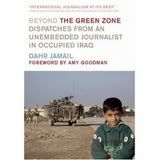

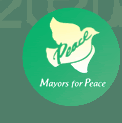


















![Campaign for Innocent Victims In Conflict[CIVIC] CIVIC](http://i160.photobucket.com/albums/t193/Annamarie_033/CIVIClogo.gif)








![British daily newspaper Daily Mail [UK]](http://i160.photobucket.com/albums/t193/Annamarie_033/mHead2.gif)






















